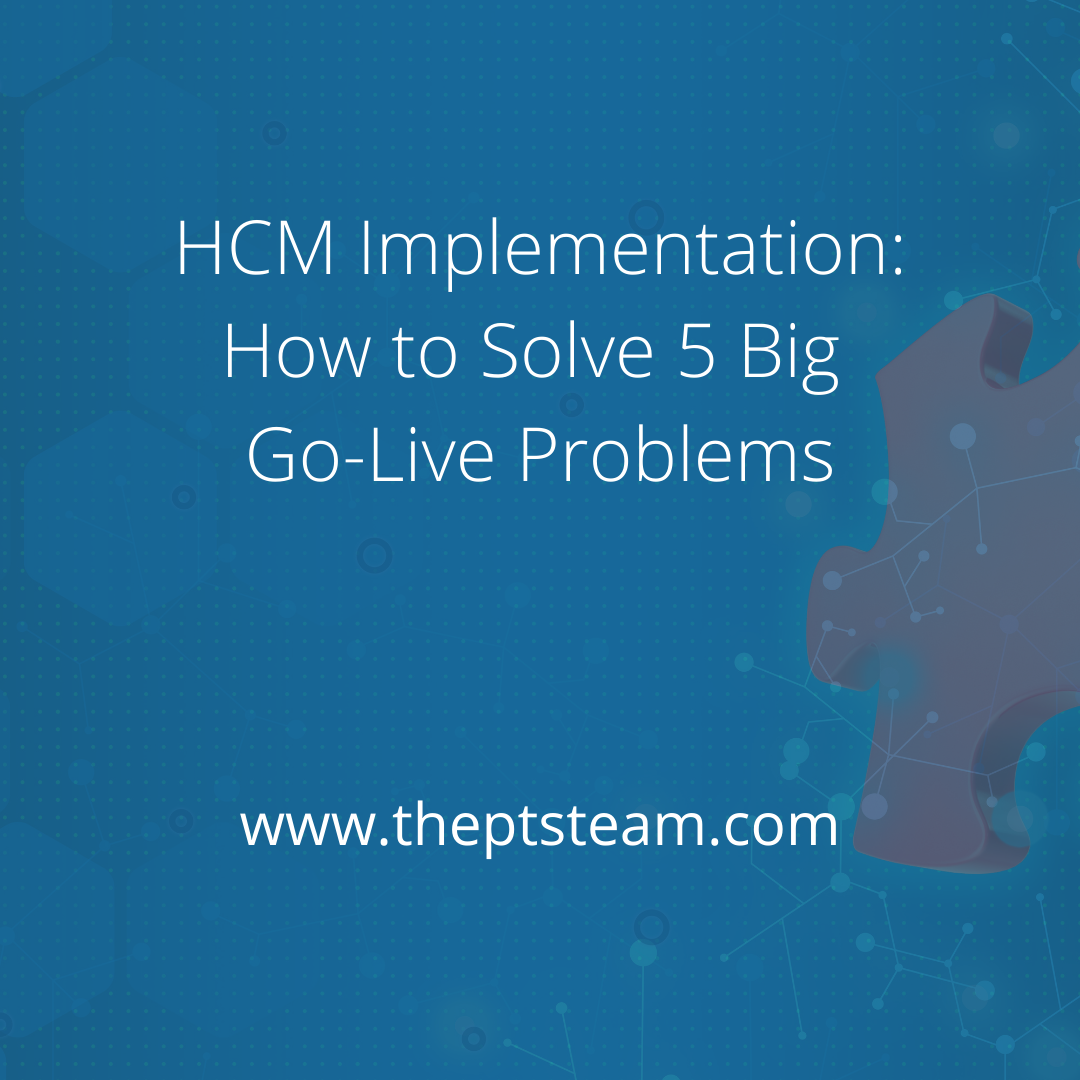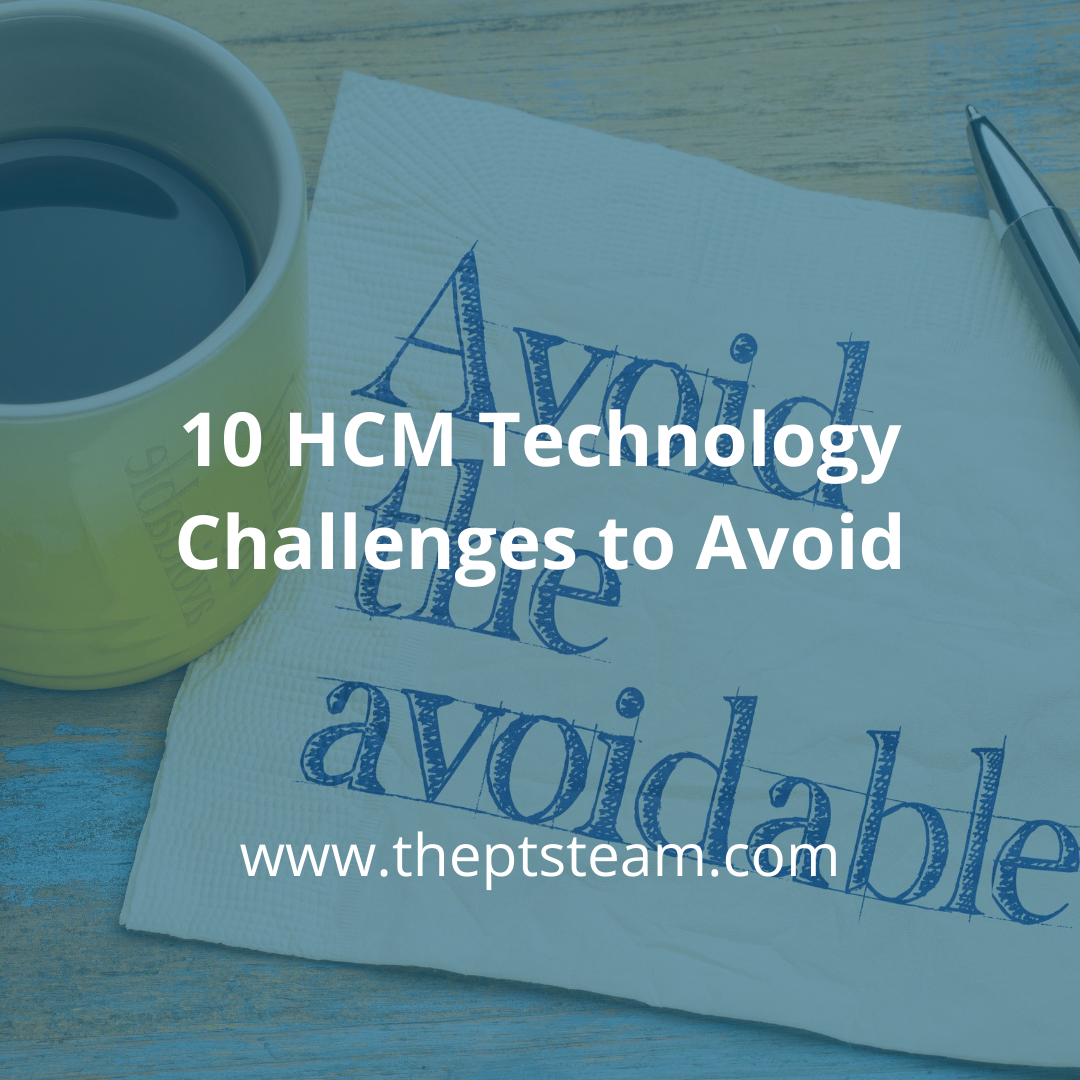Your return on investment in HCM technology largely depends on your implementation.
Improving adoption and increasing efficiency accelerates and augments ROI. But frustrating users and bungling processes impairs productivity and squanders resources.
A study by Computer Economics shows that the ROI and the satisfaction rating for HCM systems are well below those of other technologies because of implementation challenges. A successful HCM implementation requires proper planning, expert resources, and efficient execution. You must avoid mistakes that limit ROI.
1) Not clarifying your goals
Companies often buy HCM technology thinking that it will solve all of their problems. But they end up fighting fires instead because they were not strategic around the functionality of the technology.
Your software should support your company’s highest priorities and align with your vision of what HR is meant to achieve within an organization. An HR vision commonly includes ways to improve talent acquisition management and development, for example.
If expanding your workforce is a priority, consider how you could best leverage a new talent acquisition application, such as by taking advantage of advanced candidate-relationship management features. Focus on solving specific problems or realizing particular opportunities.
2) Under-estimating the resources needed
As good as they may be, your internal IT team probably cannot implement your new HCM technology on their own. They likely lack the experience and expertise needed to maximize your ROI.
Almost 70% of the organizations that reported above-average satisfaction with the implementation of their cloud HCM suite in terms of integration and deployment used a third-party system integration partner, according to a Gartner survey analysis of customers’ ratings of their HCM cloud suite experience. Only 30% of organizations that reported below-average satisfaction used a third-party service provider.
A good system integrator will bring the experience with organizational digital transformation initiatives that you may be lacking internally, specifically through the product you are implementing. They will keep your project on track, or even finish it sooner, without increasing the burdens on your internal team. That is, your employees can focus on their work instead of the implementation.
3) Pulling internal IT staff from transformation efforts
Deploying internal IT staff for implementations diverts them from innovation and transformation, through which they could add more value to your organization. So, 44% of companies augment staff with onsite or remote experience through IT service providers, according to a Forrester Consulting thought leadership paper about how innovation leaders need IT Services to drive transformative outcomes.
Companies have increased IT staff productivity by 26% while reducing overall costs by 17% through staff augmentation, Forrester found. HRIT staffing firms provide contract or contract-to-hire professionals so that you can add resources without hiring extra staff.
4) Improperly integrating systems
Best-of-breed applications like those for talent acquisition, payroll, or learning management can provide a strong ROI individually by optimizing any one HR function. But your HCM systems may run poorly overall if you do not integrate them properly during implementation.
Common HCM integration problems include disruptions caused by the need to install middleware and patch communications between best-of-breed solutions from different vendors. Incompatibility also can cause discrepancies in data that make it hard for your team to discern what is correct when information is siloed in individual systems.
Consultants often offer HCM Support Services that can help you avoid disruptions and data conflicts.
5) Delaying go-live due to data challenges
Companies sometimes delay go-lives because they have not finished migrating data. This typically occurs because leaders did not realize they were responsible for moving their data from their old system to the new until it was too late to meet their deadline for go-live. Or, they underestimated the time they would need.
On average, organizations with 1,500 to 2,000 employees that have a full HCM suite typically need at least three qualified resources spending 12-15 hours per week for a minimum of eight weeks for a data audit, clean-up, and migration project.
Data solutions providers may be able to help your subject matter experts audit, migrate, and integrate your data faster, more accurately, and at less cost.
6) Not optimizing workflows
Companies fall short of “game-changing benefits” when they treat implementations as technology projects instead of “as overhauls of business processes,” HCM technology consultant Ken Cranney explained in an HR Technologist article on why implementations are so bad.
Document your current processes. Then, determine how to best leverage the capabilities of the new system to complete HR processes more efficiently and effectively.
Technology is a tool to solve your problems -- not a cure-all.
7) Frustrating end-users
Organizations squander their investments in HCM technology when employees fail to use new systems properly or often enough. Any employee caught off guard or inadequately trained on system changes can become frustrated when mistakes occur, resulting in a slowing down of the user buy-in that's essential for making the the transition work.
Avoid HCM implementation challenges by involving employees and managers in implementing and adapting your new system as well as training them to use it properly. Communicate its benefits to them clearly and repeatedly also so that they will be eager to adopt the new technology.
Resolve any problems quickly through post-go-live support, including platform management and support as well as issue resolution, and file maintenance.
Companies often fail to get the ROI they projected when buying HCM technology because they failed to plan properly, use the right resources, or execute efficiently. Or, perhaps they even stumbled in more than one phase.
Do not make the same mistakes. Enhance your ROI and achieve your business goals through a successful HCM implementation.
Learn how our Implementation Solutions can help you accelerate ROI.
Contact us today to discuss your HCM implementation needs online, by email at info@theptsteam.com or by calling 904.719.8264.













